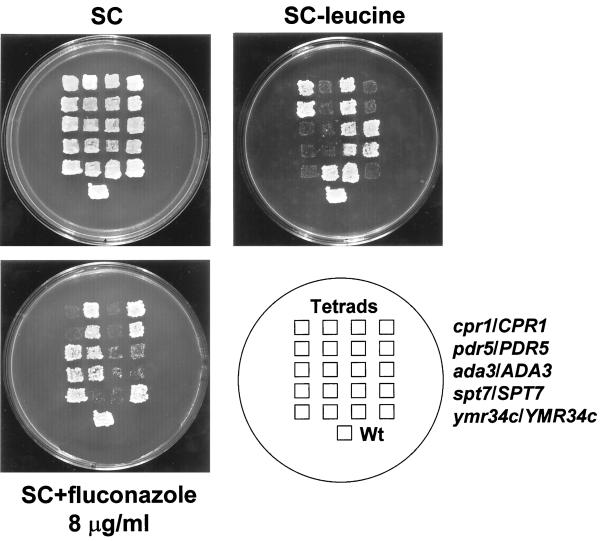FIG. 1.
The Tn3::LEU2::lacZ transposon mutagenesis scheme identifies known genes and genes previously not known to be involved in azole resistance. One representative four-spore tetrad of ascospores of each of the diploids cpr1::Tn3::LEU2::lacZ/CPR1 leu2::hisG/leu2::hisG ura3-52/ura3-52, pdr5::Tn3::LEU2::lacZ/PDR5 leu2::hisG/leu2::hisG ura3-52/ura3-52, ada3::Tn3::LEU2::lacZ/ADA3 leu2::hisG/leu2::hisG ura3-52/ura3-52, spt7::Tn3::LEU2::lacZ::/SPT7 leu2::hisG/leu2::hisG ura3-52/ura3-52, and ymr034c::Tn3::LEU2::lacZ/YMR034c leu2::hisG/leu2::hisG ura3-52/ura3-52 shows that the cpr1::LEU2::lacZ, pdr5::Tn3::LEU2::lacZ, ada3::Tn3::LEU2::lacZ, spt7::Tn3::LEU2::lacZ, and ymr034c::Tn3::LEU2::lacZ disruptants segregate 2:2 (Leu+ and fluconazole hypersensitive). The spores were patched to SC plates and then printed to SC-leucine and SC–8-μg/ml fluconazole plates. Shown is the growth after 2 days at 30°C. The 10512-3C strain transformed with a cen LEU2 plasmid was also put in the plate as a haploid wild-type (Wt) control.

